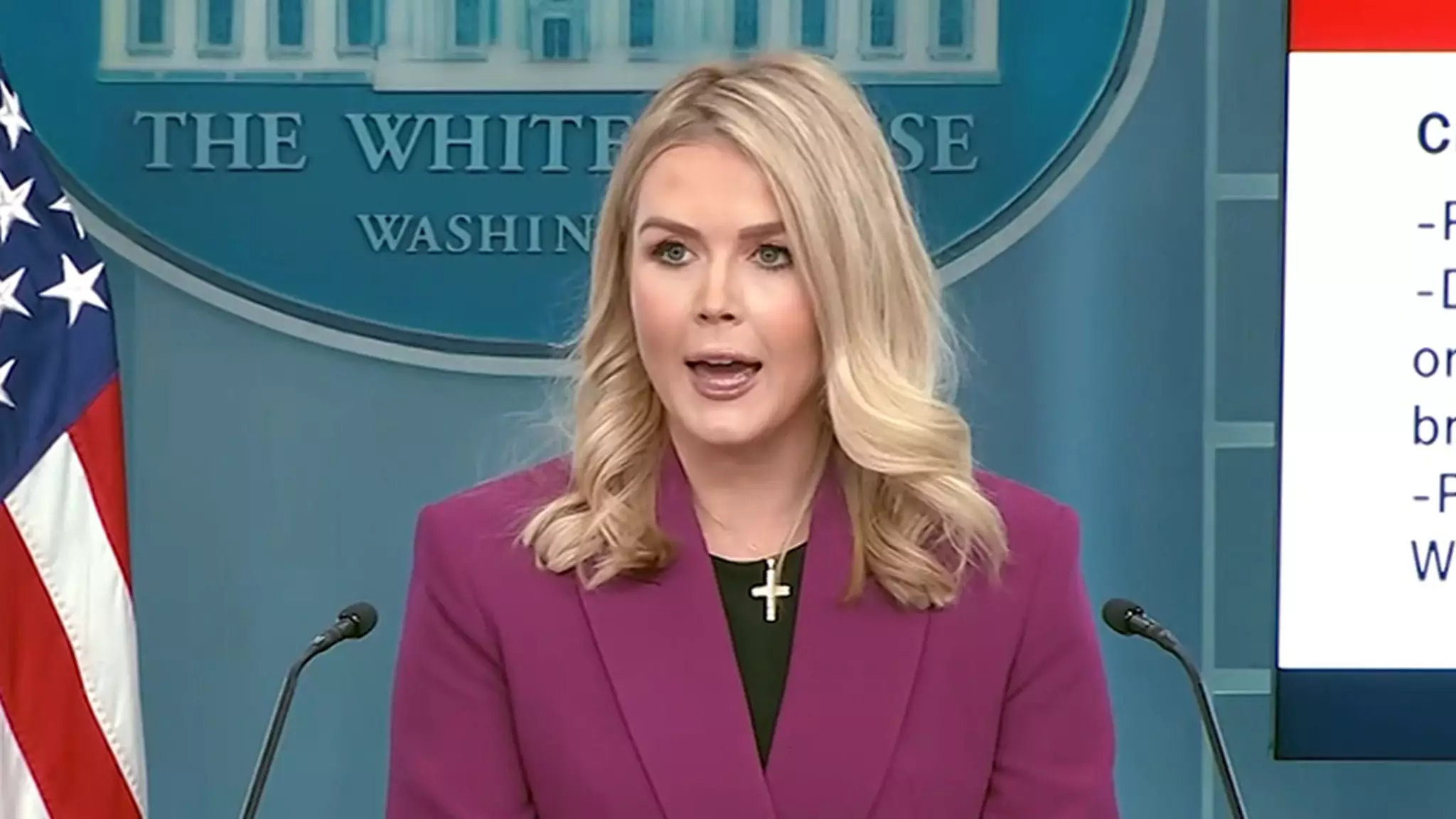In a recent press briefing, the newly appointed White House Press Secretary, Karoline Leavitt, confronted the swirl of speculation surrounding the numerous drone sightings that captured national attention in late 2022. What had initially ignited a wave of anxiety and conspiracy theories was addressed directly by the administration, shedding light on what had been labeled as a potential security threat over the skies of New Jersey and neighboring states.
Leavitt’s comments reflect a stark pivot from President Donald Trump’s earlier, more alarmist rhetoric on social media. Contradictions between his December posts and the information provided at the press conference paint a picture of evolving perceptions on national security matters. Trump’s previous declaration—that mystery drones could indicate a lack of government oversight and even potentially pose a threat—now clashes with the characterization of these drones as benign entities mainly operated by hobbyists and authorized by the Federal Aviation Administration (FAA).
The avalanche of reports regarding drones began late November through December, sparking substantial public concern. Citizens speculated about the surveillance intentions of these aerial devices, but Leavitt’s clarification offered a fresh perspective: the vast majority of drone operators were merely engaging in a recreational hobby with no malicious intent. This revelation suggests that the amalgamation of security fears and media sensationalism had exaggerated an otherwise common phenomenon.
In fact, the extent to which the drone hobby has grown is noteworthy in itself, with research firms documenting over 650 sightings, underscoring the increasing prevalence of drone usage among private individuals. Temporary flight restrictions had been put in place at the height of the fear, highlighting a significant governmental response that may have escalated public anxiety.
Comparative analysis reveals a shift not only in the narrative around these drone sightings but also in the Trump administration’s approach to media engagement and public safety discussions. The president shifted from a confrontational stance—where drones were to be shot down—to a more reassuring message aimed at demystifying the presence of aerial devices in American skies. This change speaks to the complexity of managing public relations amid rapidly changing political landscapes and growing concerns around privacy and security.
Moreover, the administration’s pushback against sensationalist theories resembles a broader trend in addressing misinformation—one that resonates deeply in an era defined by widespread digital discourse. As citizens become more wrapped up in discussions about their safety, the need for transparent communication from leadership becomes paramount.
The administration’s handling of the drone situation illustrates the balancing act between vigilance and panic. It highlights how important it is for officials to differentiate between genuine threats and benign activities in a world where technology evolves at a rapid pace. By clarifying the actual usage of drones, this moment serves as a reminder of the necessity for evidence-based policy and communication—especially when confronted with public fears that can easily spiral out of control.
The developments around the drone sightings provide a lens through which to examine not only technological advancements in recreational activities but also the significance of responsible governance communication. The ability to decode the noise and provide clarity will remain crucial for any administration navigating the complexities of modern governance.

